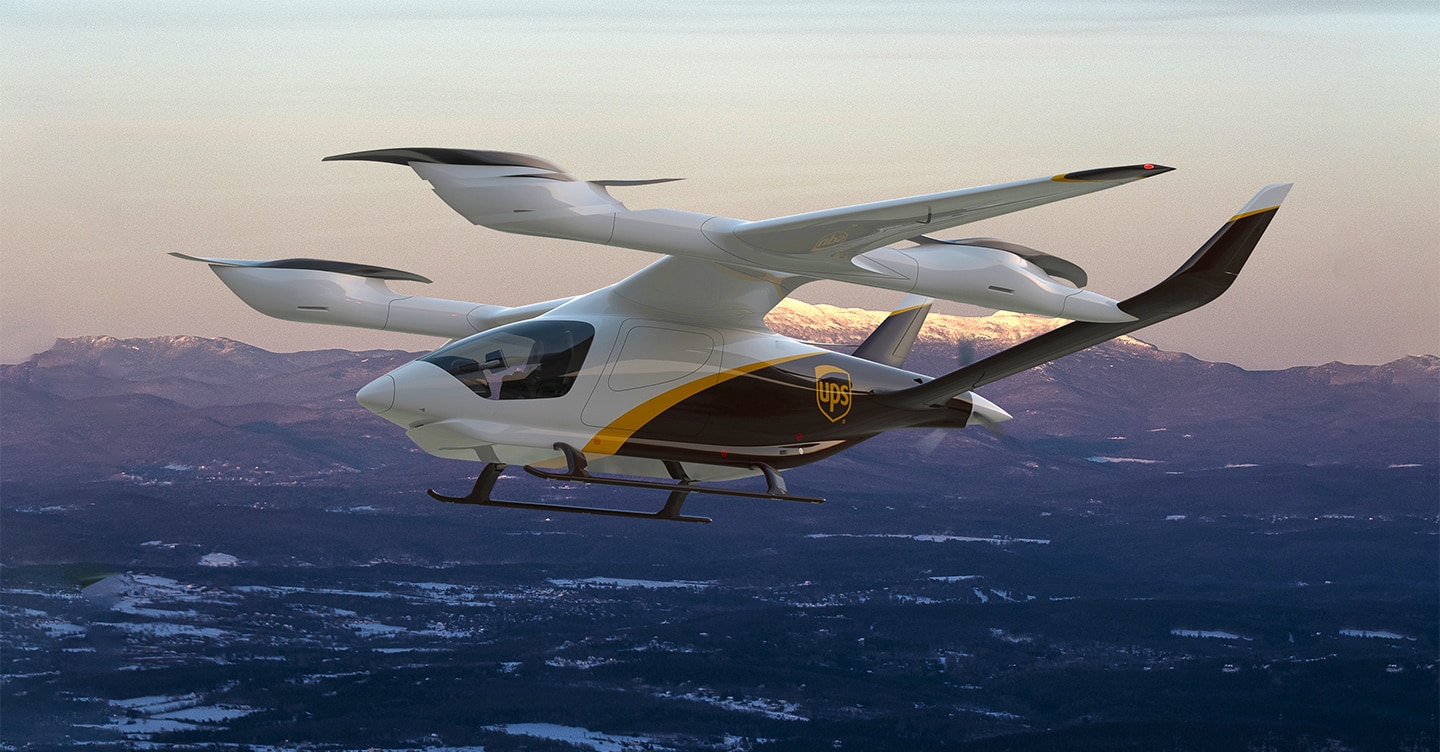Aerospace
UPS Flight Forward to add 150 electric aircraft for small and mid-size markets

UPS Flight Forward to add 150 electric aircraft for small and mid-size markets
UPS Flight Forward plans to buy state-of-the-art aircraft.
- Beta Technologies’ electric Vertical Takeoff and Landing (eVTOL) aircraft to land on-property at UPS facilities in small and mid-size markets.
- Enhances UPS network flexibility benefits healthcare providers and small and medium-sized businesses.
- A flexible, sustainable solution to reduce air network emissions; recharging stations can also be used with electric-powered ground vehicles.
Flight and Operation:
UPS, together with its UPS Flight Forward subsidiary focused on drone delivery, plans to purchase electric Vertical Take-Off and Landing (eVTOL) aircraft from Beta Technologies (BETA) to expand its air service. It benefits healthcare providers and small and mid-size businesses with its support. These aircraft will take off and land directly on UPS property, it can move smaller loads that would take longer time by ground or small aircraft, with its low noise operation, less time in transit, zero-emission and low operating cost eVTOL aircraft is perfect for UPS.
UPS states:
“This is all about innovation with a focus on returns for our business, our customers, and the environment,” said UPS Chief Information and Engineering Officer Juan Perez. “These new aircraft will create operational efficiencies in our business, open possibilities for new services, and serve as a foundation for future solutions to reduce the emissions profile of our air and ground operation.”
Aircraft range:
The BETA aircraft has a 1,400-pound (635 kg) cargo capacity with a 250-miles (400 km) range and cruising speed of up to 170 miles per hour, UPS Flight Forward scheduled to take delivery of its BETA eVOTL aircraft in 2024, with an option to purchase up to 150 aircraft.
Recharging stations:
UPS has reserved BETA’s recharging stations and ensures safe and rapid charging of the aircraft in under one hour to facilitates faster cargo loading and unloading. The charging station also offers the aircraft’s batteries a second life cycle. After the batteries’ first life cycle in the aircraft concludes, they can be fitted to the charging stations to recharge the aircraft’s onboard batteries as well as UPS’s fleet of electric ground vehicles. UPS currently operates more than 12,000 alternative fuel and advanced technology vehicles and announced a commitment to purchase up to 10,000 Arrival electric vehicles.
FAA Certifies:
UPS Flight Forward received the first U.S. Federal Aviation Administration (FAA) Part 135 Standard air carrier certification to operate a drone airline and is operating daily revenue-generating flights with drones.

Aerospace
Boeing Transfers Rocket Stage to NASA, Paving Way for Human Moon Mission

Boeing has achieved a significant milestone by providing NASA with the second core stage of the Space Launch System (SLS) rocket.
This crucial component, crafted at NASA’s Michoud Assembly Facility (MAF), is set to propel the Artemis II crew into lunar orbit, marking humanity’s return to deep space after a 50-year hiatus.
The monumental Boeing-built rocket stage, the largest element of the Artemis II mission, will embark on a journey aboard the Pegasus barge, traveling 900 miles to NASA’s Kennedy Space Center.
Comparison of two legendary aircraft B777x vs B747 aircraft:Click here
Upon arrival, it will be meticulously integrated with other essential Artemis II components, including the upper stage, solid rocket boosters, and NASA’s Orion spacecraft within the iconic Vehicle Assembly Building. This intricate integration process is a vital step toward the eagerly anticipated Artemis II launch, slated for 2025.
“Boeing-built products helped land humankind on the moon in 1969, and we’re proud to continue that legacy through the Artemis generation,” remarked Dave Dutcher, vice president and program manager for Boeing’s SLS program. “Together, with NASA and our industry partners and suppliers, we are building the world’s most capable rocket and paving the way to deep space through America’s rocket factory in New Orleans.”
NASA, Lockheed Martin Reveal X-59 Quiet Supersonic Aircraft:Click here
The delivery of Core Stage 2 marks a significant achievement in the evolution of the SLS rocket. Towering over 200 feet and powered by four RS-25 engines, this core stage, coupled with two solid-fueled booster rockets, will generate a staggering 8.8 million pounds of thrust. This immense power is crucial to launching Artemis II and future missions into the vast expanse of space.
The SLS rocket stands unparalleled in its capability to transport both crew and substantial cargo to the moon and beyond in a single launch. Its extraordinary capacity will facilitate the delivery of human-rated spacecraft, habitats, and scientific missions to destinations including the moon and Mars, ushering in a new era of space exploration.
-

 Travel1 week ago
Travel1 week agoAir India to Expand US Operations with Three New Routes After a Decade
-

 Travel2 weeks ago
Travel2 weeks agoWhy We Should Avoid These Stamps in a Passport
-

 Airlines1 month ago
Airlines1 month agoInvestigations Reveal Fake Chinese Titanium in Boeing and Airbus Jets
-

 Tech4 weeks ago
Tech4 weeks agoChina’s CATL Plans 1,800-Mile Electric Plane Launch by 2027
-

 Airport3 days ago
Airport3 days agoTop 10 Largest Airports in the World by Size
-

 Aerospace4 weeks ago
Aerospace4 weeks agoChina’s Fighter Jets Turn Wings into Autonomous Drones
-

 Airlines4 days ago
Airlines4 days agoAir India Rolls Out A350s for Delhi-New York JFK and Newark Routes
-

 Defence3 weeks ago
Defence3 weeks agoBoeing Enhances Chinook with New Engines and Block II Upgrades at $96 Million







